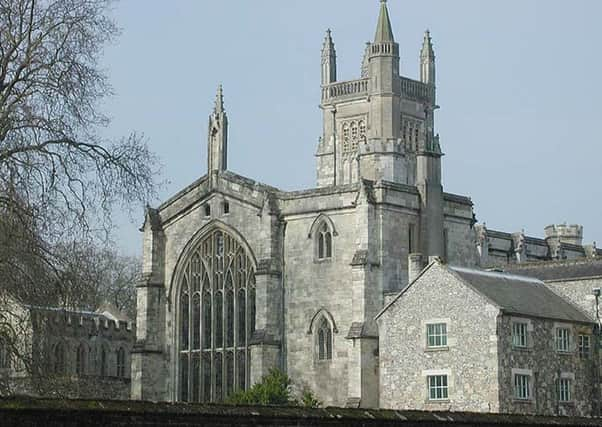Nostalgia: Huge expansion of schools


During Shakespeare’s lifetime (1564-1616) there was a huge expansion of schools and schooling for the young. Petty schools taught elementary reading and writing, enough to make sense of the Bible, now in English, recite the Lord’s Prayer, understand public notices, and make a will. Male literacy in England increased from about 10 per cent in 1500 to about 25 per cent in 1600; and female literacy from 1 per cent to about 10 per cent during the same century. By the end of Elizabeth’s reign approximately 400,000 people in England could read.
After the Reformation, the church continued to control education. Schoolmasters at all levels needed licences to teach legally. After their religious and academic qualifications had been examined, the licences were issued by bishops and archbishops. Standards of competency required of grammar schoolmasters were very high: most were expected to understand Hebrew and Greek, as well as Latin. The boys entered at about eight years, already literate and numerate, and left after four or five years able to speak Latin as well as compose poems and essays in it. Queen Elizabeth, who founded two grammar schools in Yorkshire, at Bedale and Skircoat, insisted that masters had to belong to the established church. In some cases, both Catholics and Puritans were denied licences.
Advertisement
Hide AdAdvertisement
Hide AdThe new grammar schools were funded in a variety of ways: many by local gentlemen, such as Halsham in Holderness, by Sir John Constable; Gilling, by Sir Nicholas Fairfax; and Coxwold, by Sir John Hart. Cambridge colleges endowed scholarships and exhibitions for the brightest pupils: Sidney Sussex, four scholarships from Coxwold and St John’s, six at Pocklington and Wakefield. Churchmen were leading benefactors. Archbishop Thomas Holgate founded three grammar schools at York, Hemsworth and Old Malton. By 1603 Yorkshire had fifty grammar schools.
After an absence from the documentary record for a century, Scarborough’s own grammar school reappeared in 1559 at the beginning of Elizabeth’s reign. The headmaster then was Henry Langdale, who was also vicar of St Mary’s until his death in 1602. His credentials were impressive, though not untypical at the time. After four years at Cambridge’s St Benedict’s (later Corpus Christi) college, he had stayed on as a graduate assistant to the university professor of Greek. A testimonial approved by the archbishop of York in 1563 confirmed that he excelled at Latin and was licensed to teach grammar anywhere in the archdiocese.
However, though a beneficed priest, Langdale was in fact appointed and paid by Scarborough’s Common Council. When he retired from the post in 1597 and replaced by Gregory Dickinson “the High Schoole” was said to have 20 scholars each paying an annual fee of ten shillings. So unlike many of the county’s grammar schools, Scarborough’s was not “free”.
Dickinson was not a clergyman, but Langdale’s successor as vicar, William Wood MA, would have been expected to conduct the religious education of the boys. Nevertheless, Scarborough’s burgesses were proud and protective of their own high school and successfully fought off attempts by local Puritan gentlemen, notably Thomas Hoby at Hackness and Henry Darley of Buttercrambe, to have a deciding say in the appointment of its headmasters.
Advertisement
Hide AdAdvertisement
Hide AdThere were no schools of any kind for girls. The daughters of gentlemen were fortunate if they were taken into to the households of great lords and their ladies and there given a thorough grounding to suit their status and make them more marriageable. Lady Margaret Hoby would never have prospered so well but for the patronage and tuition she received from the earl and countess of Huntingdon at York’s King’s Manor. Also, if Edward Hutchinson of Wykeham had not given each of his daughters £200 “to bring up and educate them”, perhaps John Farrer of Scarborough might not have taken one of them, Thomasin, as his wife and thereby change the history of his town.
For working-class boys and girls the best “schools” were apprenticeships. The Statute of Apprentices, passed by Parliament in 1563, required masters and mistresses of any art, mystery or manual labour to offer a minimum of seven years of bed, board and instruction. Such apprenticeships, starting at the minimum age of seven, often gave boys and girls from the most deprived backgrounds a basic education in literacy and numeracy and the necessary knowledge and skills of every kind of occupation from fishing to housewifery. There was no other route to self-improvement and self-sufficiency available to those without means.
Corporal punishment permeated all the areas of life for the young. Just as schoolmasters thought it their duty to use the birch and the rod, masters and mistresses were encouraged to instil obedience and respect for authority by use of similar instruments. Violence against the young was an accepted part of everyday life. At every level of society, from the sons of lords to those of paupers, the young were put to the task. At Guisborough grammar school, the pupils started at six in the morning and finished at seven in the summer and four-thirty in the winter. At Malton, the boys worked a ten-hour day. Opportunities had broadened and increased by Shakespeare’s time. The church was no longer the only career option: medicine, the law, and education were now opening out to younger boys, though not yet for daughters for whom marriage was often the only ladder out of poverty.